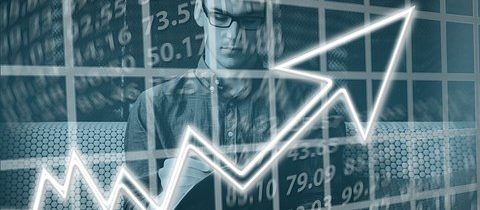Historically, the forex market was the preserve of seasoned and institutional investors, with orders executed by corporeal brokers (usually over the telephone).
However, the digitisation of the forex market has been pronounced over the course of the last 20 years, creating a scenario where even a high volume of orders can now be placed in real-time through mobile and desktop trading platforms.
This has made it considerably easier to derive a secondary income stream from forex trading, no matter where you may be in the world. But how can you get started in this respect?
What is Forex Trading?
Essentially, the forex market is a vehicle through which international currencies can be traded and exchanged, usually in pairs that feature as base and a quote asset.
Currencies are typically traded as derivative assets, which means that you can speculate on their price movements without assuming ownership of the underlying financial instruments. This makes it possible to profit even as an asset depreciates in value, which is crucial given the volatile nature of the forex market.
There are numerous investment vehicles through which you can leverage this volatility to your advantage, including spread betting and contracts for difference (CFDs). The former refers to the placement of a speculative bet on currency price shifts, whereas CFDs are short-term, leveraged derivative contracts that track the value of the underlying instrument over a predetermined period of time.
You can select the option that best suits your risk profile and trading strategy as you begin to learn about the forex market fundamentals and identify the best way to profit accordingly.
Choosing Your Trading Platform
It’s also important to provide context to the theoretical knowledge that you accumulate over time, ideally by accessing a demo account through a licensed and reputable forex broker.
You can usually utilise this for between three and six months when choosing a desktop trading platform like that from Oanda, with enabling you to bridge the gap between market theories and practical forex experience.
Crucially, this enables you to hone and develop viable forex trading strategies, based on your capital, investment outlook and the amount of spare time that you’re able to dedicate to your trading adventure.
Hopefully, this will translate into sustainable gains as you begin to trade on a part-time basis, while helping you to make the absolute most of your capital holdings.
Scaling Your Efforts Over Time
While you may be trading forex in order to secure a secondary income, this doesn’t mean that you don’t want to scale your efforts organically over time.
So, although we’d recommend trading just one or two major currency pairings when starting out, you should remain open to identifying additional assets as your experience and profitability continues to increase.
Increased profitability will certainly afford you more capital with which to invest, and it’s important to take this opportunity to diversify your interests and currency portfolio incrementally.
Over time, you may also want to invest in alternative markets and asset classes, as this diversifies your wider portfolio further and can minimise your risk and exposure in the financial marketplace.

